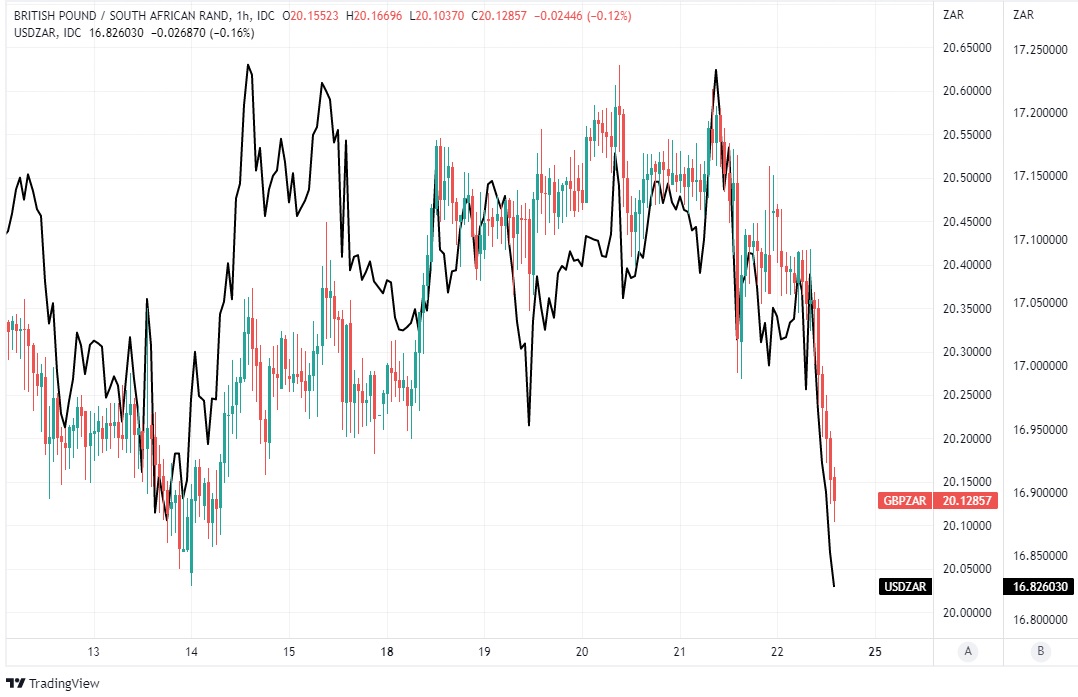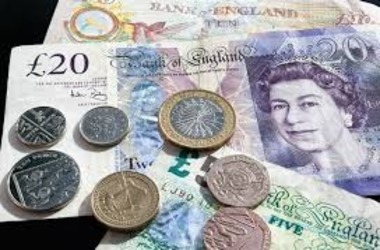 A day after the South African Reserve Bank (SARB) attempted to dampen domestic inflation expectations and prevent currency depreciation by implementing its highest interest rate increase in two decades, the South African Rand outperformed all other comparable currencies the following week. This occurred only one day after the interest rate increase.
A day after the South African Reserve Bank (SARB) attempted to dampen domestic inflation expectations and prevent currency depreciation by implementing its highest interest rate increase in two decades, the South African Rand outperformed all other comparable currencies the following week. This occurred only one day after the interest rate increase.
The South African rand gained value against all of the G20 currencies that were traded on the open market on Friday, with European peers contributing the most to the Rand’s rise in value. The Korean won, Indian rupee, and Turkish lira also contributed to the Rand’s rise in value, falling by more than one percent when measured against the South African rand.
“While we had expecting the SARB to be more sensitive to the unstable domestic economic background, the bank is entirely focused on inflation and ensuring that its credibility remains intact,” argues Carmen Nel, an economist and macro strategist at Matrix Fund Managers.
The South African Reserve Bank decided to raise its cash rate by 0.75 percentage points to 5.5 percent on Thursday. This was a more aggressive monetary policy move than many economists and a significant portion of the financial markets had anticipated. As a result, the South African Rand had a strong performance on Friday.
The recent devaluation of the currency, as well as increases in the cost of food and gasoline, were cited by Governor Lesetja Kganyago as the primary reasons for increasing labor costs and societal expectations of future inflation rates. It was the latter factors that led to the South African Reserve Bank’s decision to raise interest rates on Thursday.

“The uncertain price of oil, which is a key commodity import, as well as the weak domestic currency, continue to provide a large upside risk to the inflation outcome. One way in which this risk manifests itself is via the cost of gasoline.” An economist at Investec named Lara Hodes says that the South African Reserve Bank (SARB) currently forecasts an increase in the price of gasoline of 38.9 percent in the year 2022. (up from 31.2 percent).

The South African Reserve Bank (SARB) did not make any comments on Thursday about the most recent recommendation of its Quarterly Projection Model for the cash rate. This proposal had previously advocated for a “gradual” recovery of interest rates to more normal levels.

However, parts of Governor Kganyago’s policy indicate that the odds have recently shifted in favor of additional increases in the cash rate, and some market professionals believe that the SARB is likely to “front-load,” or bring forward policy steps that would otherwise be delayed until 2023 or later. This is due to the fact that the odds have recently shifted in favor of additional increases in the cash rate.

According to Nel of Matrix, “given that the inflation peak in the rest of the globe is not yet in the base, it is predicted that the SARB would continue front-loading policy tightening.” This would suggest that the neutral rate of 7.0 percent (according to the Bank’s model) may be achieved far sooner than predicted by the bank’s own prediction. “This would imply that the neutral rate of 7.0 percent (according to the Bank’s model) could be attained.”
She said in relation to the “neutral rate” estimate that “this would still be below the 8.00 percent to 8.50 percent range indicated by forward rate agreements (FRAs), which are allocating a substantial risk premium in light of the extremely uncertain future.”
On Thursday, Matrix Fund Managers’ Nel indicated that the policy actions of the Federal Reserve (Fed) would likely have a substantial influence on the speed at which the South African Reserve Bank (SARB) rises interest rates. Nel was referring to the fact that the Fed is now raising interest rates. The Federal Reserve has committed to increasing the level of interest rates in the United States to a level that is “moderately restrictive” by the end of the year.
The Federal Reserve’s monetary policy has a significant influence on the value of all currencies; however, the fact that the European Central Bank raised interest rates for the first time in more than a decade immediately prior to the South African Reserve Bank’s decision on Thursday may also be significant.
According to Kevin Daly, co-head of CEEMEA economics at Goldman Sachs, “given a considerable and sustained anticipated violation of the SARB’s 3-6 percent target range, we now anticipate policy rates to climb to a top of +6.50 percent, with the pace of the tightening being mostly determined by Rand dynamics.” “Given a considerable and sustained anticipated violation of the SARB’s 3-6 percent target range.”
Thursday, Daly said that “We think the SARB is unlikely to react to weak growth in the face of higher inflation and currency fears.” Daly made this statement.
The market was characterized by widespread reductions in U.S. Dollar exchange rates and underperformance from European currencies as a consequence of the most recent S&P Global PMI surveys of the continent’s manufacturing and services sectors. These surveys were conducted in January of this year. The indices for the manufacturing and services sectors in Europe continued their downward trend in July, hitting levels that are often associated with a recession.




